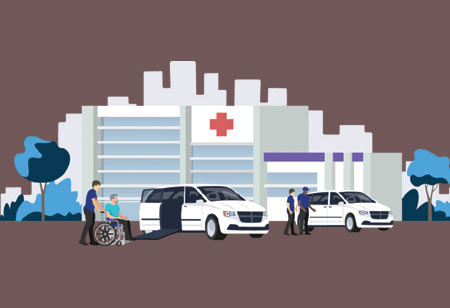Thank you for Subscribing to Healthcare Business Review Weekly Brief
Be first to read the latest tech news, Industry Leader's Insights, and CIO interviews of medium and large enterprises exclusively from Healthcare Business Review
Patient Safety and Quality of Care in Medical Transportation
European countries are enhancing medical transportation to ensure patient safety and quality care through standardisation

By
Healthcare Business Review | Thursday, December 26, 2024
Stay ahead of the industry with exclusive feature stories on the top companies, expert insights and the latest news delivered straight to your inbox. Subscribe today.
European countries are enhancing medical transportation to ensure patient safety and quality care through standardisation, provider competency enhancement, technology use, patient-centred care, specialised training, and interprofessional collaboration.
FREMONT, CA: Medical transportation is an essential component of healthcare delivery, facilitating patients' safe and efficient transfer to appropriate care settings. Across Europe, a sophisticated network of services encompassing emergency ambulances and non-emergency patient transfers is a cornerstone of effective patient care.
European countries have adopted comprehensive measures to address challenges in patient safety and ensure high-quality care during medical transportation. These initiatives focus on standardising protocols, enhancing provider competency, leveraging technology, and promoting patient-centred approaches. Precise and uniform regional protocols establish consistency in patient assessment, monitoring, medication administration, and communication, ensuring seamless care delivery. Healthcare providers involved in medical transport—paramedics, nurses, and drivers—undergo rigorous training and continuous education to uphold competency and maintain excellence in care.
Technological advancements, such as telemedicine, remote patient monitoring, GPS tracking, and automated vehicle systems, are driving improvements in communication, decision-making, and transport efficiency. Additionally, robust data collection and analysis systems enable healthcare organisations to identify trends, assess performance, and implement quality improvement initiatives. Patient-centred care is increasingly prioritised by involving patients and families in decision-making and emphasising their comfort and dignity during transport.
Transforming Patient Care through Technology and Innovation
The integration of cutting-edge technology is transforming patient care by enhancing medical transport efficiency and safety. Telemedicine and remote patient monitoring enable real-time assessment of patient conditions during transport, allowing healthcare providers to adjust treatment plans and intervene swiftly during emergencies. Advanced vehicle technologies, such as GPS tracking, automated control systems, and collision avoidance features, further improve transport safety and operational efficiency. Data analytics and artificial intelligence (AI) are also pivotal in identifying patterns, predicting risks, optimising transportation routes and schedules, and ensuring timely and effective care delivery.
Equipping Healthcare Professionals through Training and Competency
Ensuring that healthcare professionals possess the necessary skills for medical transport is vital. Specialised training programs tailored for paramedics, nurses, and other providers equip them to manage complex patient scenarios confidently. Simulation and scenario-based training offer a safe, controlled environment for developing critical thinking and decision-making skills.
Regular continuing education mandates ensure healthcare professionals remain current with evolving clinical guidelines, technological advancements, and best practices, fostering a culture of excellence and preparedness.






